
July 2015
The Genius of Verona - Part 2
By Paul Harvey
For never was a story of more woe... Shakespeare
My May 2015 Flywheel article was the first part
of the tale of the Genius of Verona, John Kowalsky. Briefly, it
noted John's birth in Wisconsin and his move to Verona, Pennsylvania, to
pursue the engine manufacturing business and develop his dreams. That
article detailed many of his varied designs and existing engines. In
Verona he became immersed in anything that moved: automobiles,
motorboats, and airplanes. Yes, airplanes! He had an inventive mind
beyond comprehension but this eventually led to his downfall. Some 400
years ago, the Bard of Avon concluded his immortal play, Romeo and
Juliet, with the above line which so appropriately fits the life of
John Kowalsky. The inventor's portrait is shown in Photo 1.
His final story now unfolds.
Automobiles
John Kowalsky developed a "light car" engine in 1903, shown in Photo 2. He was located in Pittsburgh, Pennsylvania, at that time and probably worked for the Force & Briggs Company. His engine was a four-cycle design, with only one cylinder. With a four inch bore and four and one half inch stroke, it had sufficient power for the "buckboard" vehicles of the time. About 1910, one ad shows an improved single-cylinder automobile engine, as seen in Photo 3. Interestingly, this ad denotes the Kowalsky Engine Company was located in Latrobe, Pennsylvania. There is no other reference to substantiate this move. The Verona Historical Society noted that, in 1906, Kowalsky operated an automotive dealership in Verona, Pennsylvania, selling the Orient Buckboard and the Gale. Photo 4 shows the Orient. It looks like a fun little vehicle to drive! Although history is unclear, it seems that Orient was buying some of their single-cylinder, four horsepower, engines from Kowalsky. The Gale, Photo 5, appears to have been a nice car for its vintage, although production was short-lived.
Motorboats
Kowalsky's interest in automobiles and stationary engines was soon eclipsed by his love for motorboats. He had developed a very dependable two-cycle engine for this use early in his career. Moving to Verona, Pennsylvania, he built his first shop on the east bank of the busy Allegheny River. Imagine watching all the steam boats bringing raw materials south to industrial Pittsburgh and then taking finished products back north - all just outside his back door! A few years later, John moved his shop to the corner of Grant and Railroad Streets, a mere two blocks from the river. Here he built a two-story brick building that is still in use today. Photo 6 shows the river from outside this building. Located here, he had a ready market for his boats and marine engines.
Business must have been good for, in 1908, Kowalsky, a member of the Pittsburg Launch Club, decided to build a masterpiece. Shown in Photo 7, this craft was solid mahogany and used over 19,000 brass screws, all inserted from the inside so that no fasteners showed. It was a magnificent vessel! Powered by an eight-cylinder, two-cycle Kowalsky engine of 80 horsepower, it attained 30 miles an hour on the river. Sadly, due to its speed, it was banned from the river! Kowalsky was able to sell it to a Detroit businessman who enjoyed it on Lake Michigan. Another triumph delegated to end as a failure.
Stepping back to 1905, we see that complete opposite of speed, a canoe. John successfully installed a one horsepower engine of his own manufacture into a canoe, seen in Photo 8. The original description of this venture is so pleasant to read that I have included it as Photo 9. I wonder how many were made?
Photo 10 is a typical advertisement for the Kowalsky two-cycle marine engine. Made in various power ratings, these smaller engines were the mainstay of his factory for many years. He also sold complete boats with these engines already installed, ready to cruise the three rivers of Pittsburgh. However, his most successful engine was the 20 horsepower two-cylinder model as seen in Photo 11. With a basic 10 horsepower, two-cycle cylinder, they were made in multiples of a two-cylinder, four-cylinder, six-cylinder, and the big 80 horsepower eight-cylinder. He had a good product and many were sold.
Airplanes
By 1908, Kowalsky had a very successful
manufacturing business with Harvy Miller as president and general
manager of the John Kowalsky Engine Company. The excellent sales of the
marine engines gave John some wealth for the first time in his life.
Unfortunately, two events soon caused this venture to collapse. First,
Cameron Waterman, who had purchased Kowalsky's famous mahogany boat,
visited
Photo 12 shows John
sitting on top of his first airplane in 1910, readying it for its first
flight ever. Next, in Photo 13, we see John sitting in the
cockpit about ready to give it a try. I'm sure the adrenaline was
pulsing through his veins. Would he fly and live or crash and die? Of
course, the engine is a 40 horsepower Kowalsky. Interestingly, the wing
design was meant to be a parachute in case of failure! Using the main
street of
Kowalsky designed and built many planes
over the next few years and had several successful flights. By 1911, he
was trying his second airplane, a biplane with a larger engine. It did
fly, but he landed in a tree. Undaunted, he again built a better plane
in 1912 and demonstrated it with a successful flight over the
Very ambitious, Kowalsky now decided to try an air mail
service. He engaged Theodore Stockman of
Declining Years
An interesting article was found in the
The year 1913 was a turning point is
Kowalsky's life. As he returned to his shop in Vernoa, it must have been
with remorse to have seen so many of his brilliant inventions turn into
failure. On June 20 of that year, he essentially turned over his marine
engine business to the Oakmont Motorboat Company but retained his shop
to invent. Here he eventually became a recluse. Oakmont borders
By the mid-1930s, John's neighbors,
fearing the worst, asked the authorities to check on him. He was found
acutely ill, emaciated, and confused, but still in his workshop. He was
taken to the
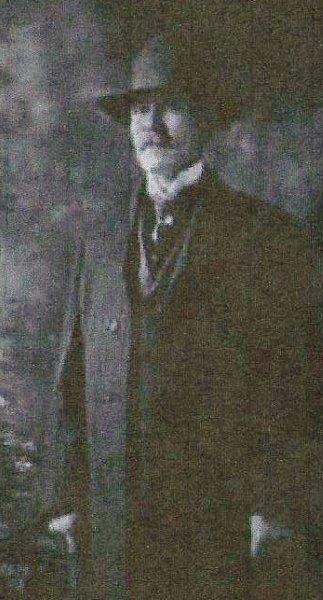
Photo 1: Portrait of John Kowalsky
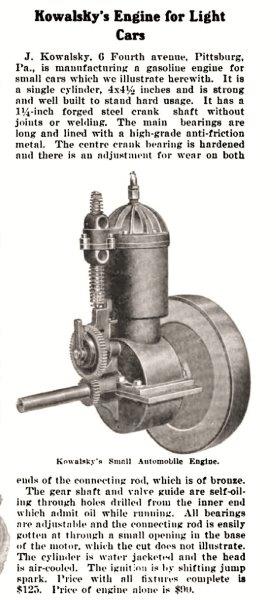
Photo 2: Kowalsky Light Car Engine. Note
that Pittsburgh was spelled with out the "h" during those times.
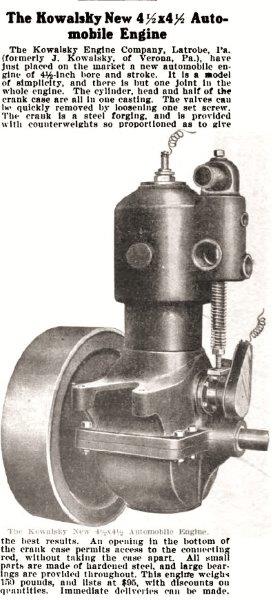
Photo 3: Kowalsky New Automobile Engine
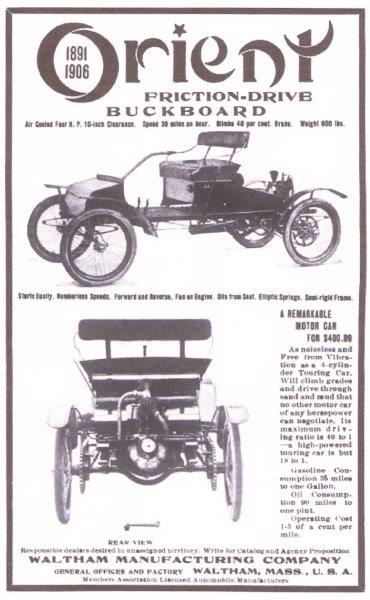
Photo 4: Orient Buckboard
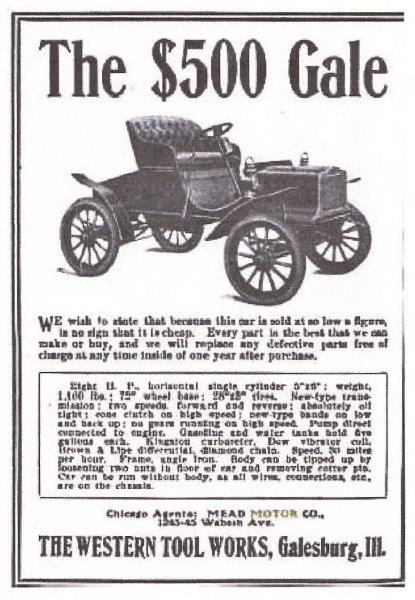
Photo 5: Gale Automobile
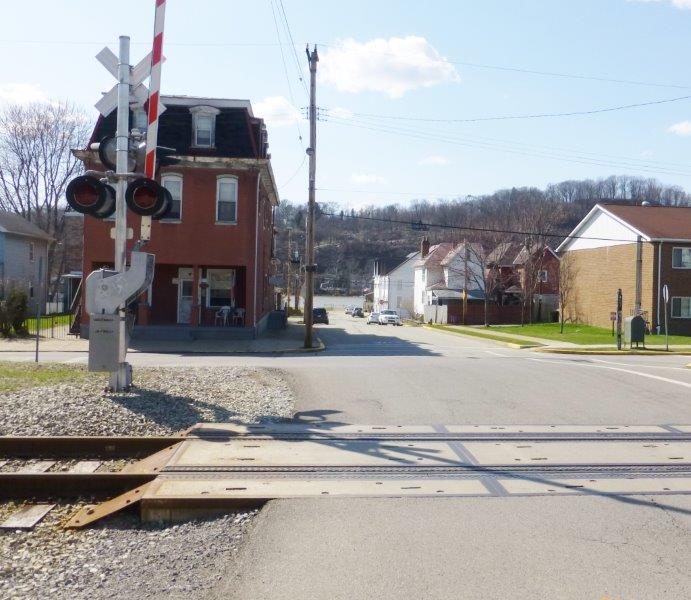
Photo 6: View of the Allegheny River
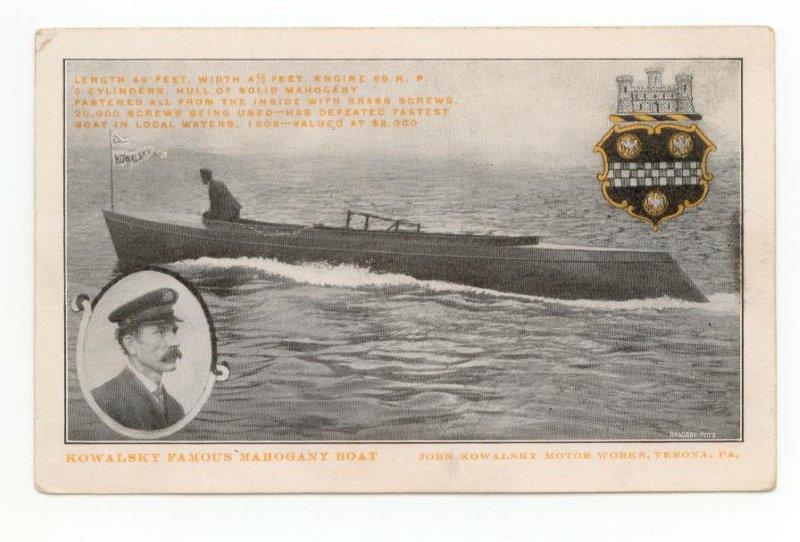
Photo 7: Kowalsky speed boat
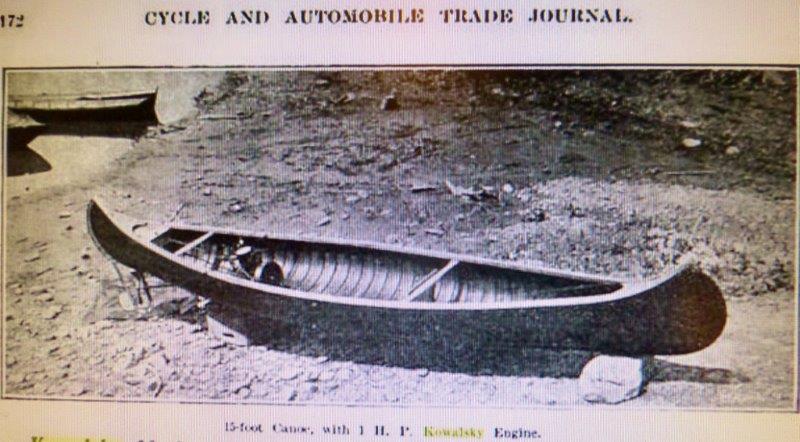
Photo 8: Kowalsky canoe
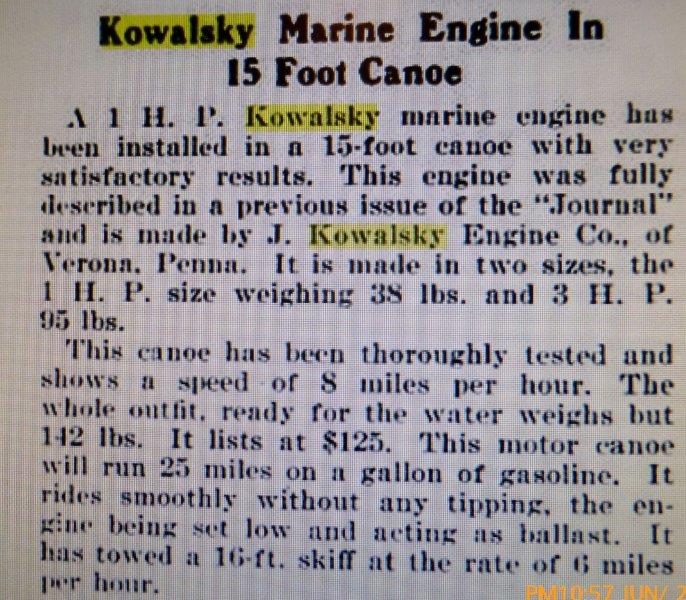
Photo 9: Account of Kowalsky canoe
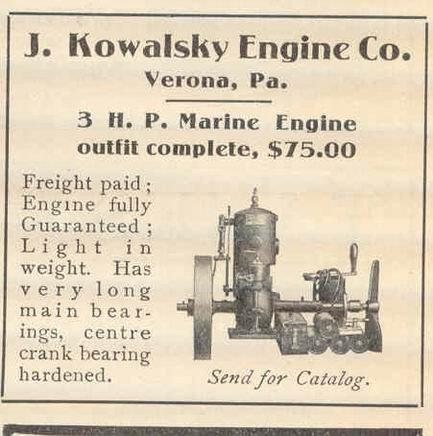
Photo 10: Ad for Kowalsky marine engine
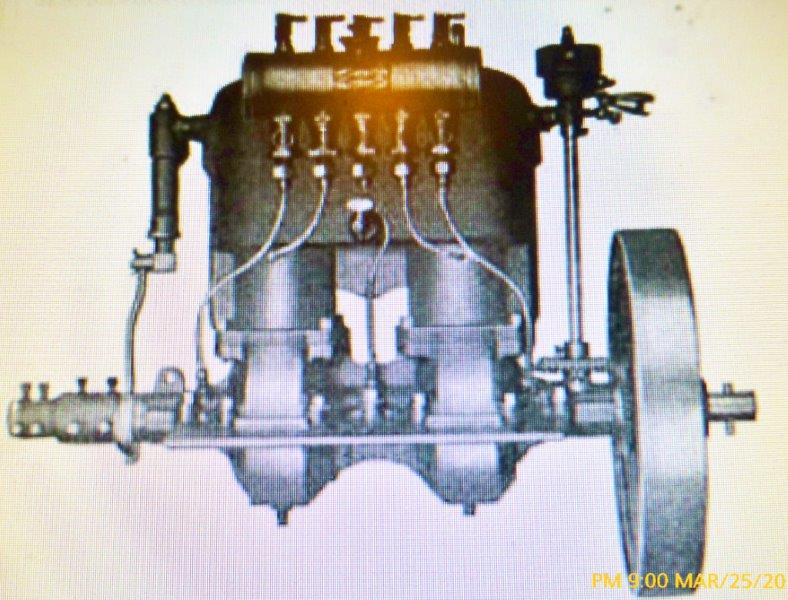
Photo 11: Kowalsky 20 hp engine
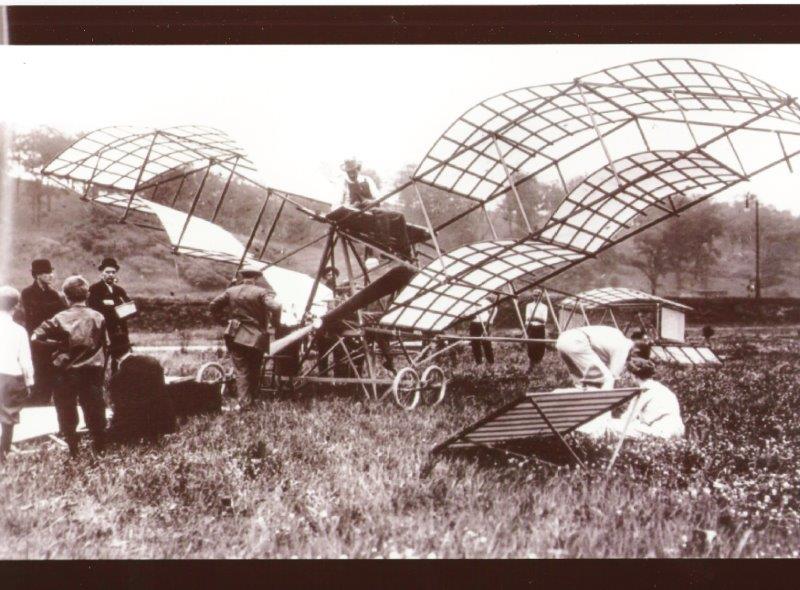
Photo 12: Kowalsky's first airplane
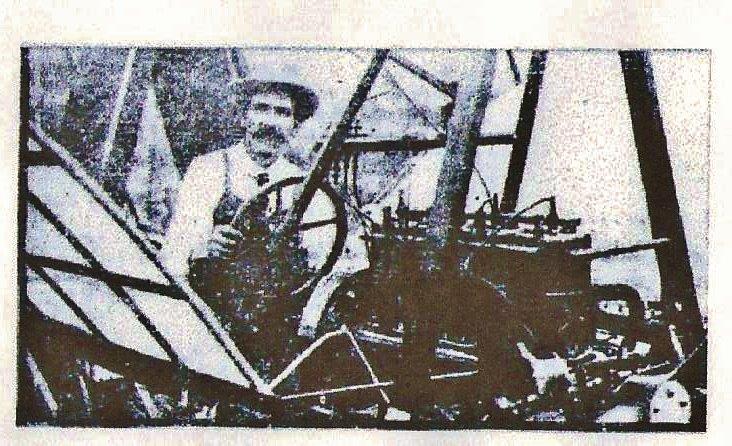
Photo 13: John Kowalsky in his airplane
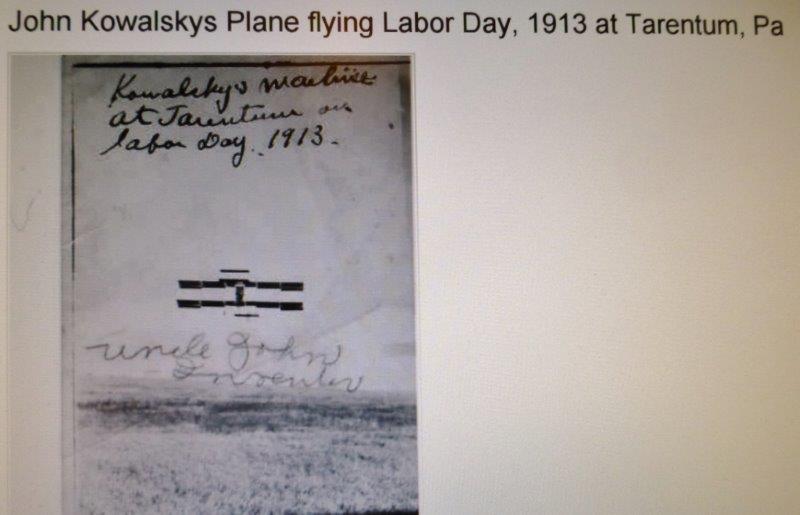
Photo 14: Kowalsky's airplane flying
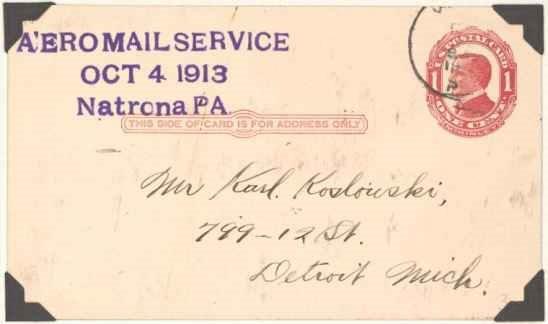
Photo 15: Airmail postcard
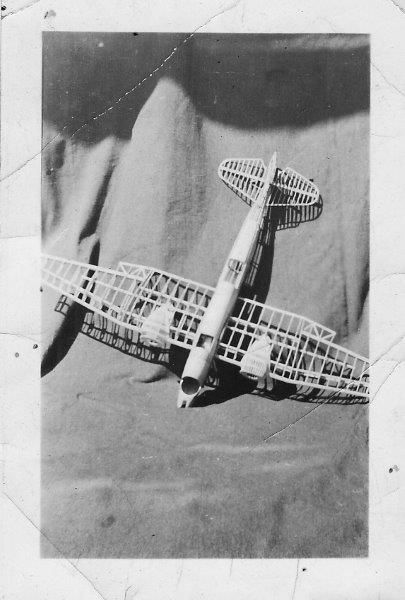
Photo 16: Kowalsky's airplane model
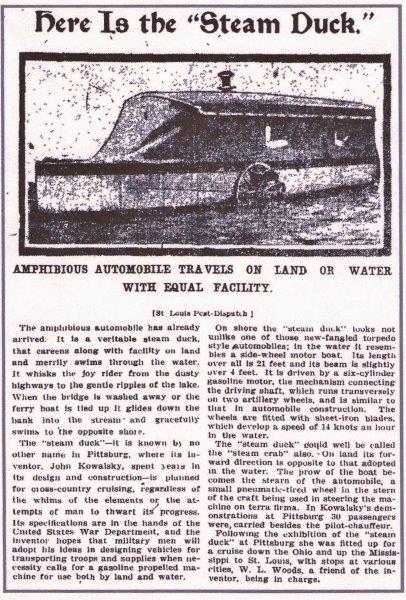
Photo 17: The Steam Duck
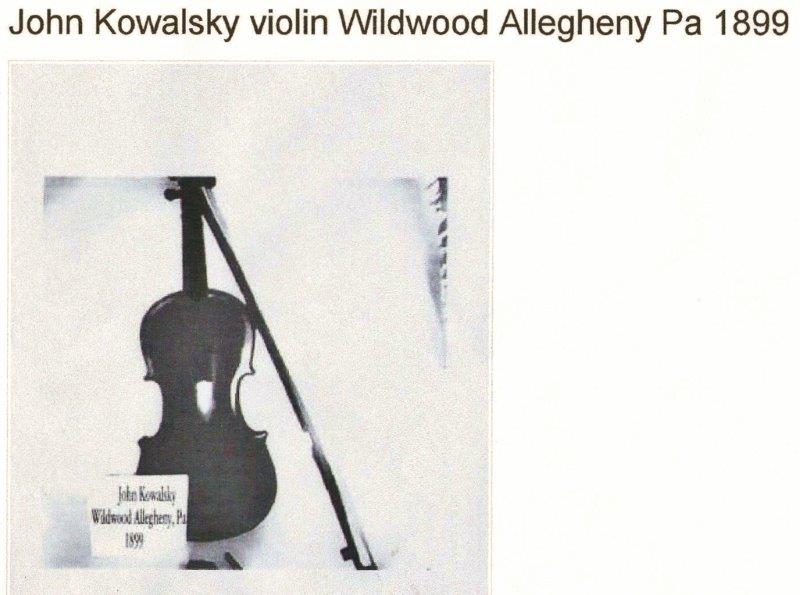
Photo 18: Violin by John Kowalsky
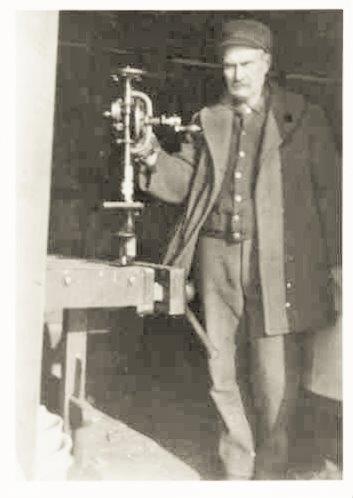
Photo 19: John Kowalsky: Inventor
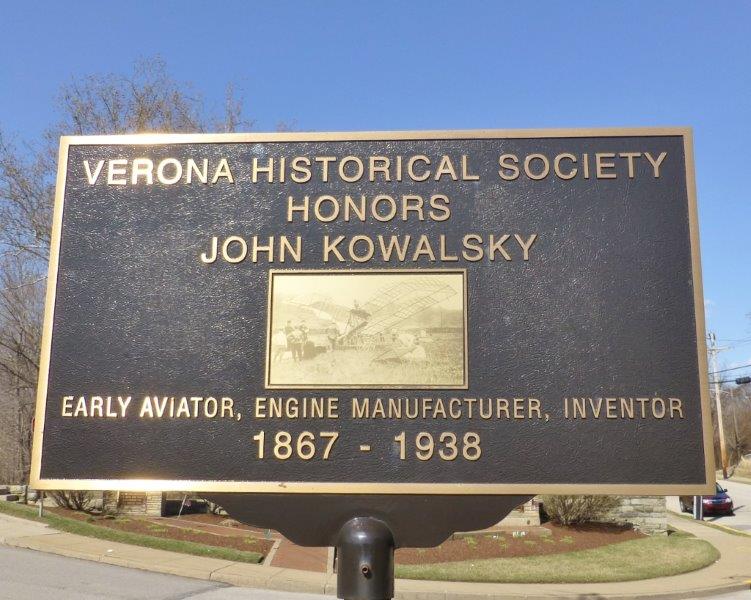
Photo 20: Memorial to John Kowalsky